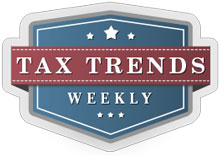Is That Really the Seafood You Ordered?
Oceana, a nonprofit group focused on preservation of the oceans’ ecosystem, recently published a two-year study in which it collected seafood samples from over 600 supermarkets and restaurants in 21 states. The Oceana researchers were looking for inconsistencies in the labeling of fish and expected to find plenty of it, but even they were taken back by how widespread it is. For example, 52 of 66 samples of purported “white tuna” from sushi restaurants turned out to be escolar.
The good news is that there is little mislabeling when it comes to the five most popular seafood items eaten in the United States: shrimp, canned tuna, salmon, Pollock, and tilapia. However, when a type of seafood is rare and in demand (such as red snapper), and consequently is expensive, the incentive for mislabeling increases.
The researchers were unable to determine when mislabeling occurred. Over 80 percent of seafood is imported and goes through a chain– consisting of the supplier, distributor– before being purchased by the consumer. While some instances of mislabeling are simply honest mistakes, the fact that expensive seafood appears to be mislabeled at a higher rate indicates that significant “fish fraud” is occurring.

